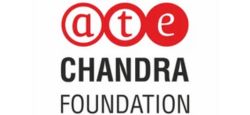A nonprofit’s ability to deliver its programmes effectively is intricately linked to its strategy. And while building a high-impact intervention is part of the solution, organisational development is key to increasing the nonprofit’s long-term robustness. This continuous emphasis on strengthening the overall structure of the organisation is not only critical to its growth, but also facilitates the scaling of its impact.
This case study explores how Antarang Foundation was able to develop their organisational strategy with the help of an external consultant. It outlines the challenges and successes they experienced during the process and the long-term impact of this strategic exercise.
Antarang works with youth between the ages of 14 and 25 through their CareerAware and CareeReady programmes. The organisation primarily aims to encourage students to stay in formal education for as long as possible, and assists youth from disadvantaged backgrounds to bridge the gap between education and employability in order to set them on the path to a fulfilling career.
Strategic planning was core to Antarang
Ever since its inception, Antarang has conducted an annual review and strategic planning exercise in November/December. As part of the exercise, the organisation’s senior leadership collectively reflect on what they have achieved in the year gone by to identify what has worked and where they can do better. This exercise is steered by the organisation’s guiding principle of helping realise a world where every young adult is productively, positively, and passionately engaged in a career of their choice. The ideas and reflections generated through the exercise are then presented to the rest of the team and the board. Through subsequent deliberation with the internal team, the organisation arrives at its goal for the following year.
In 2019, a conversation with a long-time supporter (Rizwan Koita of Koita Foundation) prompted Antarang’s leadership team to look into bringing on external help to establish a durable strategy. They wanted someone to provide them with a sense of direction and a pathway for scaling their impact. To help them do so, they decided to bring a consultant on board.
The organisation set three broad criteria that they wanted their consultant to fulfil. First, they wanted them to factor in the organisation’s philosophy, processes, and strengths and ask the right questions that would guide Antarang in deciding next steps. Although the organisation was aware of their broader objectives, and the factors that influenced the fulfilment of these objectives, they needed help unearthing their hidden competencies. Therefore, the right consultant was one who had the strategic and analytical abilities to help them move beyond using a myopic lens to see the bigger picture.
Second, Antarang wanted to realise their place in the larger ecosystem. This was important for them to understand the gaps they were filling and what they needed to do to have greater impact. This would enable them to deliver on their promise of enabling young people to successfully transition to a career.
Lastly, Antarang wanted their external consultant to be a go-to resource who could identify emerging trends in the ecosystem. This third aspect was especially important because it would help the organisation come up with a long-term vision based on how the ecosystem was evolving.
Getting the money and the consultant was easier than they thought
Initially, the organisation did not have the funds to bring a consultant on board. Antarang’s founder, Priya Agrawal, says that they have not been great at fundraising for organisational development. “I feel, at some level, we are almost shy about asking for some of that funding. It feels a lot more justified when you’re asking for programmatic funding or support.” The organisation spoke to a few nonprofit peers to understand the benefits of bringing a strategy consultant on board and what it would cost to do so. Then, they approached a few donors who have historically been invested in the organisation’s growth.
Priya also mentions that once they actually approached these donors with their plan, they realised that the donors were far more receptive than they would have imagined. “We didn’t ask for one donor to fund the whole thing. We approached several and said, ‘If you can support X amount, I’m going to go out and ask somebody else to support another X amount on the back of this.’ And to our surprise, nobody said no.”
To identify consultants that they could approach, the organisation first invited recommendations from their donors and other organisations that had conducted similar exercises. Based on these recommendations, they reached out to Dasra, Dalberg, Bridgespan, and Sattva to potentially come on board as an external consultant.
Some organisations were out of the running fairly quickly as they were prohibitively expensive. Antarang was ultimately left with two options, and they picked Dasra because they met all three of the organisation’s requirements: They had the strategic insight the organisation required, they were familiar with the ecosystem Antarang operated within, and they had a strong understanding of donor requirements.

Alignment within the organisation was harder
The Antarang team realised that going back to the drawing board was something they were comfortable with, which made the initial period of reflection quite exciting and seamless. However, the first hurdles arose in the process of ensuring value alignment. Priya notes that the importance they place on collaborative decision-making “may almost come across as [us] being indecisive or dragging our feet”. Allowing enough space for everyone involved to be aligned on a certain way of thinking, even if it means retracing their steps, is something that the organisation has always been committed to.
Although they were told by Dasra that strategic planning exercises should involve a group of two to three people at most, Antarang brought in a steering committee that consisted of three internal members and three board members. The multiplicity of perspectives often resulted in them revisiting questions or moving in circles. The emphasis on getting everyone on board and in alignment with each other was a point of friction (for both Dasra and Antarang team members), as it resulted in the exercise taking far longer than it typically should.
Priya also notes that some of the processes needed for alignment should have been handled internally as it would have helped move the needle a lot faster. “For example, the process entailed going through all our data to figure out our most critical stakeholders and identify what worked and what didn’t. This took Dasra a long time to arrive at, but it is something we knew already. I think that if we had expedited some of those processes for Dasra, it could have gone a little bit faster.”
Managing the team’s emotions during the process is critical
According to Venil Ali, senior director of programme operations and scale at Antarang, bringing on an external consultant helped the team navigate the emotions that arose as a result of deciding to no longer pursue programmes that certain members of the team were quite invested in. For instance, the organisation decided to stop working with communities. However, this was quite an emotional decision for team members who had been working with communities over the years, as they felt their effort and investment had been rendered futile. Having Dasra act as a neutral facilitator during the process and ensuring that the team reached a consensus was critical in preventing these emotions from bubbling over.
The fact that numerous people from the organisation were involved in the decision-making and implementation was also beneficial. Although the steering committee put together by Antarang was small, they made a concerted effort to involve their alumni and other team members as well. By gathering their inputs before each steering committee meeting, the organisation ensured that the opinions of all who would be impacted by the committee’s decisions were accounted for.
From strategy to action
The strategic decisions made by the steering committee were passed on to a small group of managers who then attempted to formalise how these decisions would play out. Based on learnings from external surveys and feedback from the rest of the team, this group would outline the areas to focus on.
In addition, the organisation created ‘working groups’ that would present the structure put together by the steering committee to the alumni, staff, and other relevant stakeholders. Approximately 50 percent of the organisation was part of at least one of the working groups, and having them be intrinsic to the process played a critical role in building ownership, clarity, and excitement for the process. The feedback provided by these stakeholders was then conveyed to the small group of managers mentioned above. This was an iterative process that took four to five months. Dasra was present through this process to provide feedback.
A director and three-member team from Dasra had been assigned to work with Antarang. In addition to fortnightly meetings with the Dasra team to provide updates on their progress, Venil also consulted with a manager from Dasra twice a week after the initial operationalisation was complete.

What did it lead to?
1. Clarity of vision and goals
One of the most important benefits of the strategic planning exercise was that it enabled Antarang to understand how they wanted to scale their impact. Priya says, “I feel that we are now certain we don’t want to become this mammoth organisation with thousands of people. We want to be able to scale our impact in a non-linear and leaner fashion.” This vision now serves as the guiding principle for the four-year intervention that they have planned.
2. Consistent messaging
Antarang now has greater faith in the ability of their team to approach and involve a large variety of stakeholders, including its alumni, non-core team, and funders. Priya notes that a recent visit from one of their largest donors reinforced this. “A comment from the donor that stands out is, ‘Whoever you speak to in the team speaks the same language and is really clear about why you’re doing what you’re doing.’ I think that statement bears evidence to the fact that it pays to take people through the entire process.”
3. Ability to think about scale
The organisation’s orientation to scale also underwent a significant transformation. Venil says, “I think that now it’s so much easier for people at every level of the organisation, whether it’s an intern, assistant, or associate, to think of solutions from the lens of scale.” The team is now able to ask themselves: Will this work at scale? If not, how do we need to change this to retain the impact? “Scale doesn’t scare us, and I think designing for scale just comes more easily now,” Priya adds. The confidence that the external partner instilled in the team by highlighting their strengths and capacities also played a major role in reorienting their outlook on scale.
Advice for other nonprofits
1. Know why you’re undertaking this exercise
It is important for nonprofits to understand whether or not they can embark on this endeavour internally. They must also think about whether they are at the appropriate stage in their life cycle to bring on an external consultant. Priya says, “We believed that one of our programmes clearly had potential to scale rapidly, and we were pretty certain about the impact that we were making with the other programme. Therefore, the time was right for us to think about next steps.” A strategic rethink should thus be one that is warranted.
2. Understand your roles
It is important for a nonprofit to know what role they expect the external party to play and what aspects will be handled internally. For example, working on value alignment and how to break strategy into implementation milestones are best done internally.
In addition, consultants can help organisations clearly identify what work they need to continue doing and what work needs to stop. For nonprofits, deliberation and alignment on what not to do is integral to building for scale.
3. Use data well
It is essential to point the consultant to the data and information that you already possess. Mapping this data out in a manner that highlights the gaps allows for the subsequent strategising to be precise and effective.
4. Involve multiple stakeholders
Antarang greatly benefitted from involving numerous stakeholders across all levels right from the start of the process. Priya notes that knowing when to bring in certain stakeholders ensured that the process was smooth and had buy-in, and prevented any unpleasant surprises. Strongly echoing this sentiment, Venil highlights that involving diverse stakeholders in their committees and working groups got them to be more invested in the processes and their outcomes. Including multiple voices also enabled the team to receive inputs from those closest to the ground, who were able to provide detailed and practical feedback on what would work and what would not.
5. Internal capacity is key
Venil mentions that at least two members of the team should be able to dedicate approximately 50 percent of their time to the process. This is because the capacity of the external facilitator cannot compensate for the context and in-depth insights that the internal team can provide. Since the external facilitator will need to keep coming back to the internal team, it is integral for the team to possess the internal capacity to effectively anchor a strategic overhaul.
Advice for funders
1. Make space for honesty and openness
A donor’s commitment to the organisation’s success must go beyond simple financial transactions. Maintaining an open line of communication with the grantees fosters greater honesty and clarity. By being transparent with their donors about the roadblocks to their growth, Antarang leveraged their donor’s capabilities and strengths to collaboratively tackle the organisational issues they faced.
2. Let nonprofits decide their scale approach
In this instance, Antarang chose scale using a non-linear approach. This was possible because their donors helped provide the resources they needed to understand their readiness and capacity for scale and the different scale models available, and accordingly choose what would work best.
3. Invest in organisational development
The team emphasised the importance of investing in organisational capacity, noting that it is critical for an organisation to have a clear sense of direction and an ambitious vision. Antarang’s strategy, for example, gave them a focused implementation plan (including the capacities they needed to build), a non-linear scaling plan that leveraged partnerships and existing investments, a sharp understanding of what they could and could not do, and a clear picture of what support they needed from donors.
These aspects of an organisation’s work and plan can be fostered through holistic support that does not solely target the organisation’s programmes. “Either you can keep giving money only for programmes, or help build capacity so that we can deliver them more efficiently,” Venil says.
—
About Priya and Venil
Priya Agrawal is the founder-director of Antarang Foundation. An Ashoka fellow and a former advertising professional, Priya has now spent two decades leading organisations in the development sector.
Venil Ali started her work in the development sector in 2004, volunteering while pursuing her graduation. She started an after-school centre called LEAP in 2008 that catered to approximately 60 students at Matunga Labour Camp, Mumbai. In 2009, Venil joined the first cohort of the Teach For India Fellowship. Post her fellowship, she joined Teach For India as a staff member and played different programmatic roles before becoming the city director of Mumbai. She also built out all tutor operations at an EdTech start-up. Currently, Venil is the senior director of programmes and scale at Antarang Foundation. She hosts a podcast called A New Kind of Celebrity, which highlights the work of different changemakers.
—
Know more
- Go through this checklist of what to consider when hiring nonprofit consultants
- Want to know if you’re ready to scale? Read this piece by SSIR and this one by IDR







